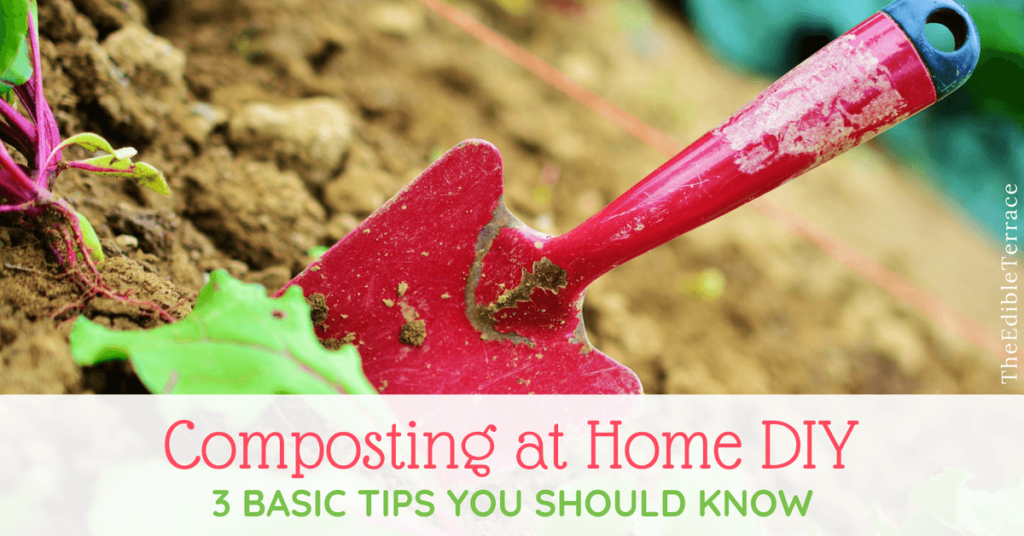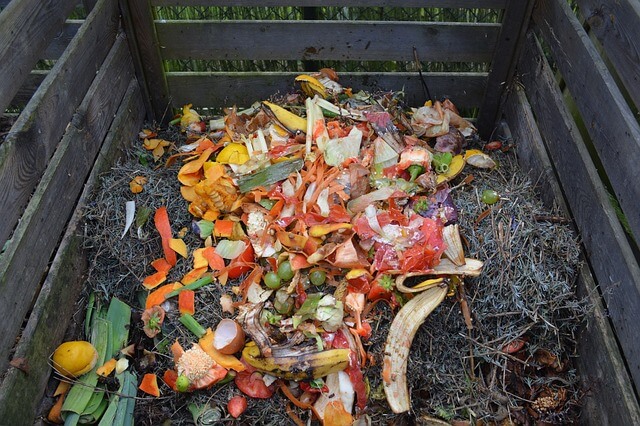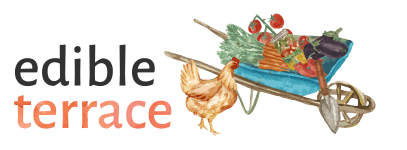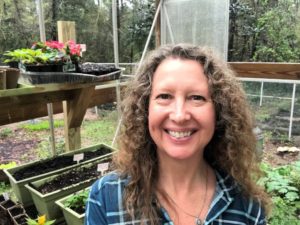Hey! By the way… TheEdibleTerrace is reader-supported. When you buy through links on our site, we may earn an affiliate commission and as an Amazon affiliate, we earn from qualifying purchases. Thanks in advance for your support!

Compost is the organic vegetable gardener’s best friend. In fact, it’s hard to imagine a successful growing season without a healthy dose of this amazing, nutrient-rich “black gold” working its magic in your garden beds.
The best part is that you don’t need to spend a fortune to buy quality compost for your garden. You can make your own premium blend right in your own backyard with minimal to no investment. All you need is a little space, some basic raw materials, and a bit of effort to make it happen.
Composting at Home DIY – 3 Basic Composting Tips for Your Organic Vegetable Garden
Tip #1: Pick the Right Location – Where to Put Compost Bin or Pile
[easyazon_infoblock align=”right” identifier=”B009378AG2″ locale=”US” tag=”edibleterrace-20″]Although the recommended “ideal” dimensions for a compost heap ranges from 3 to 5 feet in length, width, and height, this isn’t a hard and fast rule. These dimensions are recommended because compost piles this size can generate enough internal heat to break down the organic matter inside quickly.
At the same time, these dimensions are small enough that home gardeners can manually turn and keep them moist without too much trouble.
These conditions matter because heat, oxygen, and moisture all factor into how quickly the organic material in your pile breaks down. So, if you have space for a compost pile this size, that’s great! However, you don’t have to have this much space available to make your own compost. It just might take a little more time to do so.
You can either [easyazon_link identifier=”B009378AG2″ locale=”US” tag=”edibleterrace-20″]purchase a small composter[/easyazon_link] for the task, or you can work organic kitchen scraps, shredded fall leaves, grass clippings, and other suitable materials straight into your garden beds for an added pop of nutrients as they break down naturally.
If this seems counterintuitive, consider this:
There are no compost piles in nature. They aren’t necessary because nature is extremely efficient when it comes to breaking down and reusing what is no longer viable on its own.
One caveat, however, if you take this approach is that you will need to carefully consider which materials you add directly to your beds. For example, some [easyazon_link identifier=”B00AMNCYNQ” locale=”US” tag=”edibleterrace-20″]kitchen scraps[/easyazon_link] should be chopped into small pieces first to help them break down more quickly.
In addition, fresh manure should be aged properly before adding it to your beds or it can burn your plants (research carefully which manures are safest to use-most organic gardeners only recommend using vegetarian animal manure).
Depending on the type of manure and other environmental conditions, this process can take anywhere from several weeks to months to complete.
PDF Plans for Building Your Own Composting Bin
- CalRecycle: Building your Own Composting Bin: Designs for Your Community
- Construct101.com DIY Compost Bin Plans
- City of Edmonton Do it Yourself Composting Bins
- Boston Recycling Build Your Own Compost Bin using welded wire fencing
What To Compost and What Not To Compost

Tip #2: What to Compost
Compost is created when organic material is broken down by microbes and other organisms in the presence of heat, moisture, and oxygen.
There are two main categories of raw materials used to make compost: Brown (or carbon-rich) materials, such as fall leaves and wood chips, and green materials, which include grass clippings, coffee grounds, and other nitrogen-rich items.
It seems everyone has an opinion when it comes to what makes the “perfect” organic compost. Online, you’ll see that the “ideal” ratio of carbon to nitrogen materials in compost piles range somewhere between 25-30 parts carbon to 1 part nitrogen.
This is a great guideline, but how can the average home gardener know how much nitrogen is present in grass clippings throughout the growing season, or how much carbon is available in a mixed pile of fallen oak, maple, and birch leaves?
The reality is sometimes you just need to dive in and take an educated guess. Do some experimenting to see what works for you, while keeping the recommended ratios in mind. Keep track of your results and make adjustments as you go along until you find the right balance.
Remember, gardening is supposed to be fun, not another source of stress. So have some fun with this process!
Tip # 3: What Not To Put in Compost
In addition to knowing what materials you should use, you’ll also want to know what not to put in the compost pile.
Avoid:
- Dog and cat feces
- Sawdust from wood pallets
- Pressure treated lumber
- Glossy printed paper
- Non-organic kitchen scraps
- Grass clippings from areas that have been chemically treated
- Meat and other animal products should be avoided
Some of these items will attract unwanted pests to your garden, while others will introduce toxic and harmful substances you’ll want keep far away from the food you grow.
Conclusion
Composting at home DIY style is done by thousands of gardeners and has been for generations. All you need to do is just start. Don’t let the tons of do’s and don’ts get in the way of your beginning. You CAN do this! Your garden AND your budget will thank you.

